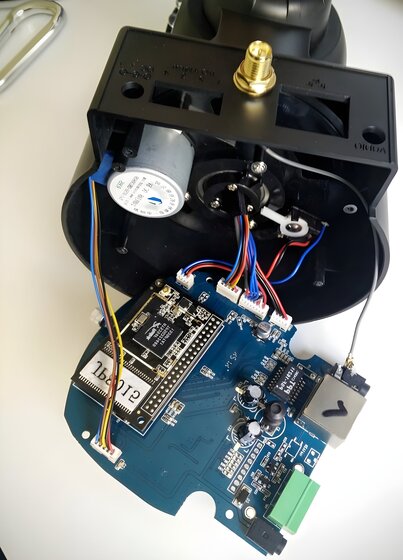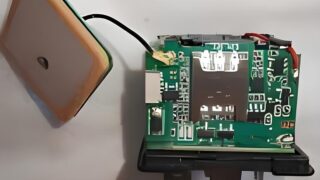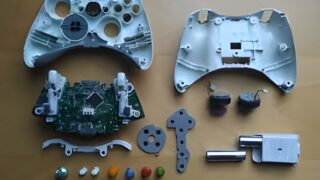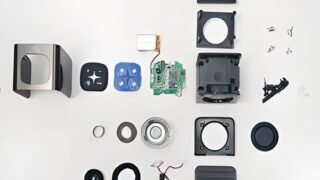An IP camera, also known as a network camera or internet protocol camera, captures and transmits video over an IP network, such as the internet or a local area network (LAN). Unlike analog cameras, IP cameras have built-in networking capabilities, eliminating the need for a direct connection to a video recorder or monitor. They offer high-resolution image quality, network connectivity for remote access, various power options, advanced features like motion detection and night vision, and storage flexibility. IP cameras can be integrated into existing systems and are widely used for home security, commercial surveillance, traffic monitoring, and public safety.
IP cameras are manufactured worldwide, with major manufacturing countries including China, Taiwan, Japan, Germany, and other countries in Europe and Southeast Asia. The global supply chain in the electronics industry often involves sourcing components and parts from different countries.
The market for IP cameras is driven by a global demand for advanced surveillance systems and increased security measures. Major importer countries of IP cameras include the United States, the United Kingdom, France, Canada, Australia, South Korea, and Brazil. These countries have robust markets for IP cameras, benefiting from factors such as the adoption of smart home technologies and the need for enhanced surveillance solutions. On the other hand, China and Taiwan are the primary exporters of IP cameras, supplying a significant portion of the global market.
IP Camera Product Inspection Service for Components
The BOM (Bill of Materials) is a vital document in IP camera manufacturing. It lists all necessary components, enables accurate identification and sourcing, facilitates cost estimation, aids in supply chain management, ensures quality control, allows for customization and variations, and optimizes the manufacturing process. Overall, the BOM streamlines production and ensures high-quality IP cameras.
An IP camera commonly consists of various sub-parts, including:
- Image Sensor
- Lens
- Processor
- Memory
- Ethernet Port
- Power Supply
- Housing
- Infrared (IR) LEDs
- Pan-Tilt-Zoom (PTZ) Mechanism
- Microphone and Speaker
- I/O Ports
- Video Encoder
- Network Interface
- MicroSD Card Slot
- Power Indicator LEDs
- Audio Codec
- Power Management Circuitry
- Heat Sink
- Lens Mount
- Reset Button
- IR Cut Filter
Defects commonly found in the sub-parts of an IP camera include:
- Image Sensor Defects: Image sensors may develop defects, including dead pixels (unresponsive spots or colored pixels) and stuck pixels (pixels that remain a constant color). These issues can lead to degraded image quality or anomalies.
- Lens Issues: Lens defects like scratches, smudges, misalignment, or calibration issues can affect image clarity, sharpness, focus, and cause distortion.
- Processor Malfunctions: The camera’s performance and reliability can be affected by processor malfunctions caused by hardware or software issues. These malfunctions can lead to performance degradation, freezing, or system crashes.
- Network Connectivity Problems: IP cameras require network connectivity for data transmission, but problems with Ethernet ports, Wi-Fi modules, or network configuration can cause intermittent or total loss of connection, impacting remote access and live streaming.
- Power Supply Failures: Power supply problems, like faulty adapters or PoE issues, can result in inconsistent or no power, leading to camera malfunctions or unresponsiveness.
- Firmware or Software Bugs: Firmware or software in IP cameras control their operation, but bugs or glitches can cause image processing errors, camera configuration issues, or compatibility problems with network equipment or video management systems.
- Housing or Mounting Defects: Defects in an IP camera’s housing, such as poor construction or weak joints, can result in moisture, dust, or physical damage, compromising its durability and performance.
- PTZ Mechanism Failures: PTZ IP cameras may encounter mechanical problems that affect their motors, gears, or positioning systems, leading to erratic movements, incorrect panning/tilting/zooming, or motor failure.
- Audio Component Problems: Defects in the microphone, speaker, or audio codec can result in poor audio quality, distortion, or complete loss of audio functionality.
- Memory Corruption: Memory component issues in cameras can cause data corruption, system instability, crashes, loss of footage, settings, or storage problems.
- Power Surge Damage: Electrical fluctuations can harm IP camera components, causing failures, instability, or complete malfunction.
- Firmware Incompatibility: Camera firmware incompatibility can cause connectivity issues, limited functionality, and hindered integration with other network devices, software, or video management systems, affecting the camera’s full utilization in a surveillance system.
- IR LED Failure: IP cameras with IR LED failures can cause inadequate or uneven illumination in low-light conditions, affecting nighttime surveillance image clarity.
- Temperature Sensitivity: Extreme temperatures can impact IP camera performance and longevity. High temperatures may result in overheating and system failures, while low temperatures can affect responsiveness and cause condensation.
Implementing rigorous quality control measures and inspecting the sub-parts of IP cameras that are manufactured in China or Asia is highly recommended. The quality of the sub-parts makes a significant contribution to the IP camera’s overall performance, so it is vital to ensure its quality before developing the final product.
We provide skilled local quality inspectors who ensure the correct utilisation of components and materials in the production of IP cameras, guaranteeing their high quality.
IP Camera Product Quality Check Service for Manufacturing
The manufacturing process of an IP camera is a multifaceted endeavour, encompassing various stages, each accompanied by its own inherent quality risks. It is imperative to diligently mitigate these risks to guarantee that the end product aligns with the intended expectations.
To ensure adherence to the necessary standards, various quality checks can be implemented throughout the manufacturing process of an IP camera, encompassing electronic and mechanical components.
For electronic parts:
- Printed Circuit Board (PCB): The testing process for a Printed Circuit Board (PCB) involves various stages, including visual inspection, continuity and functionality testing, signal integrity testing, ESD (Electrostatic Discharge) testing, and electrical performance testing.
- Power Supply Unit (PSU): To ensure the quality and performance of the Power Supply Unit (PSU), the following tests are conducted: Input Voltage testing, Output Voltage verification, Load testing, Overload Protection and Temperature testing, Efficiency testing, Stability and Ripple testing, Insulation Resistance testing, and Aging testing.
- Voltage Regulators: To assess the quality of voltage regulators, important factors to consider include their voltage regulation accuracy, load and line regulation capabilities, ability to minimise ripple and noise, effectiveness in overload and over-current protection, thermal performance, as well as their longevity and reliability.
- Microcontroller or System-on-Chip (SoC): Key testing areas for microcontrollers or system-on-chip (SoC) include functional and performance testing, compatibility testing, power consumption testing, stability and reliability testing, security testing, firmware update compatibility testing, and interoperability testing.
- Memory Chips: A comprehensive testing approach for memory chips includes functional and performance testing, endurance and compatibility testing, data retention testing, as well as environmental and aging testing.
- Image Sensor Interface: Tests include signal integrity testing, image sensor calibration, image quality evaluation, compatibility testing, timing verification, image data transmission testing, EMI/EMC testing, and longevity and reliability testing.
- Ethernet Controller: The Ethernet controller was tested for connectivity, link speed and negotiation, data transmission, compatibility, network protocol support, network stability and reliability, performance and throughput, stress testing and Power Over Ethernet (PoE).
- Audio Codec: Testing for audio codec includes verification of sampling rate, bitrate accuracy, frequency response, SNR measurement, distortion analysis, echo cancellation, noise suppression, latency, compatibility, and robustness.
- Connectivity testing, Speed and Performance testing, Compatibility testing, Stability and Reliability testing, Security and Encryption testing, Stress testing, Compatibility with Power over Ethernet (PoE), Interoperability testing for Network Interface Controller (NIC).
- Power Supply and Power Efficiency testing, Overload Protection, Voltage Regulation and Short Circuit Protection, Heat Dissipation Evaluation, Power Interruption Testing, Power Surge Protection, Lifespan and Durability Testing for Power Management Circuitry.
- Connectivity Testing, Input and Output Functionality, Voltage and Current Testing, Compatibility and Response Time Testing, and Stress and Environmental Testing for GPIO (General Purpose Input/Output) Ports.
For mechanical parts:
- Camera Housing: Comprehensive assessment of camera housing includes material inspection, dimensional accuracy evaluation, impact resistance testing, water and dust resistance verification, UV resistance and thermal cycling assessment, salt spray and vandal resistance examination, aging testing, as well as finishing and appearance inspection.
- Mounting Bracket: Tests include load and vibration testing, environmental testing, tilt and swivel testing, torque testing, compatibility testing, as well as visual inspection.
- Pan-Tilt-Zoom (PTZ) Mechanism: Testing procedure includes evaluating the Pan and Tilt range, assessing speed and acceleration, measuring preset position accuracy, conducting zoom tests, verifying PTZ control functionality, performing continuous movement tests, assessing mechanical stability, conducting endurance tests, and evaluating temperature and environmental factors.
- Lens Assembly: A comprehensive evaluation of lens assembly involves assessing various aspects such as optical calibration, focus accuracy and uniformity, zoom functionality and accuracy, image resolution and clarity, distortion and vignetting analysis, low-light performance, infrared (IR) lens testing, aperture functionality, image stabilization testing, and overall performance.
- Infrared Cut Filter (IR Cut Filter): Evaluation of the infrared cut filter (IR Cut Filter) includes tests for spectral transmittance, mechanical durability, abrasion and scratch resistance, temperature and humidity resistance, image quality, switching speed, and ageing and longevity.
- IR LEDs: The testing procedures for IR LEDs include visual inspection, light output measurement, wavelength analysis, angle of illumination assessment, power consumption evaluation, continuous operation testing, switching and dimming analysis, environmental and ageing testing, and compatibility testing.
- Cable Management: Effective cable management entails various key aspects that contribute to its success. These include routing and secure attachment, cable length and slack management, cable protection, labeling and identification, accessibility, separation and interference prevention, strain relief, compatibility, durability, and documentation.
- Weather Sealing: Various tests to evaluate the weather sealing includes Ingress Protection (IP) rating testing, dust resistance testing, water resistance testing, temperature and humidity testing, UV resistance testing, mechanical stress testing, and salt spray testing.
- Sun-shield: The evaluation criteria for sun-shields include visual inspection, fit and compatibility, resistance to sunlight reflection and glare, durability in various weather conditions, impact resistance, ease of installation and adjustment, as well as longevity and ageing.
- Gimbals: Comprehensive testing methodologies for gimbals include range of motion, precision, and accuracy testing, vibration and stability testing, speed and responsiveness testing, load capacity testing, durability and stress testing, environmental testing, as well as calibration and alignment testing.
- Wall Mount Arm: The wall mount arm undergoes comprehensive testing, including load testing, stress testing, vibration testing, corrosion resistance evaluation, environmental testing, ergonomic assessment, material and dimensional checks, as well as longevity and endurance testing.
- Locking Mechanism: Tests including locking and unlocking, durability, load, tamper resistance, environmental and compatibility, corrosion resistance, and security assessment.
To ensure the reliability of your IP camera, it is crucial to ensure that your manufacturer has conducted all necessary checks prior to product delivery. However, in the event that they are unable to do so, our specialized quality inspection team is prepared to provide you with comprehensive support, including quality control, inspections, and on-site testing processes.
Achieving successful mass production of IP cameras relies heavily on implementing effective quality control measures.
Our comprehensive quality inspection services, which encompass Production Monitoring and Factory Audit, offer invaluable support and resources to efficiently mitigate risks, detect and rectify quality concerns, and maintain absolute control over your production process. By availing our services, you can guarantee the flawless execution of mass production and attain optimal outcomes for your business.
After the sub-suppliers have finished manufacturing all parts and sub-parts, the final product assembler (referred to as the factory from which the end product is purchased) typically carries out the following procedures:
- The components are internally sourced from the manufacturing division.
- During the process of incoming quality control, components are carefully inspected and evaluated. (or not)
- Ensuring proper alignment and correct attachment of the parts. (or not)
- Test benches and human testers are commonly employed to ensure the proper functionality of IP Cameras.
- Final-stage quality control can be conducted. (it may be omitted for expedited shipments)
Ensure proper packaging of the product.
Every process inherently carries quality risks that necessitate thorough consideration and effective mitigation (Particularly in cases where human processing is involved, which generally lacks repeatability).
Our quality inspection agency specializes in providing comprehensive end-to-end solutions aimed at minimizing production risks in IP camera manufacturing. Our diverse range of services includes the establishment of quality control checkpoints and the deployment of highly skilled and experienced quality inspectors. Through meticulous monitoring at multiple stages of the manufacturing process, we guarantee the maintenance of the highest standards of quality.
IP Camera Quality Control & Typical Defects
The quality of an IP camera can be influenced by various factors, such as the selection of components and materials, the proficiency of craftsmanship, and the dependability of testing procedures.
Common issues with IP cameras often include the following defects:
- Connectivity Problems
- Image Quality Issues
- Motion Detection Errors
- Power Supply Problems
- Firmware Bugs or Compatibility Issues
- Storage and Recording Issues
- PTZ Malfunctions
- Network Security Vulnerabilities
- Physical Damage
- Audio Issues
- Firmware Update Failures
- Inadequate Low-Light Performance
- Lens Distortion or Focusing Issues
- Infrared (IR) LED Problems
- Overheating
- Compatibility Issues with Third-Party Software or Devices
- Time Synchronization Problems
- Environmental Factors
Please feel free to share any other types of defects you have encountered. We would appreciate if you could provide further details in the commentary section.
Our experts are ready to help you identify the underlying cause of quality issues with your IP camera. Please feel free to contact us by clicking the button below. We are ready and willing to assist you in any way we can.
IP Camera Quality Control Service, what do we check:
Our inspectors place priority on several aspects during product inspection and quality control of IP Cameras, which encompass, but are not limited to, the following:
- Image Quality: The IP camera undergoes a comprehensive evaluation of its image quality, encompassing the assessment of various parameters, including resolution, color accuracy, clarity, sharpness, and dynamic range. Furthermore, the camera’s performance in capturing and reproducing high-quality images across diverse lighting conditions is thoroughly examined.
- Video Streaming and Compression: The performance of the IP camera’s video streaming is evaluated by assessing its smooth and uninterrupted streaming, low latency, and efficient video compression. We also examine the camera’s ability to handle different video compression formats and bitrates.
- Day/Night Performance: We conduct testing on IP cameras with day/night functionality to ensure a seamless transition between different lighting conditions. We evaluate the camera’s ability to capture clear images in both daytime and low-light or nighttime scenarios, including assessing the effectiveness of our built-in infrared (IR) illuminators or other low-light enhancement features.
- Motion Detection and Analytics: We thoroughly test the motion detection and advanced analytics features incorporated in the IP cameras. Our evaluation includes assessing the accuracy of motion detection, sensitivity settings, the camera’s ability to track moving objects, and the performance of additional analytics capabilities such as people counting, object recognition, or facial detection.
- Network Connectivity: We evaluate the IP camera’s network connectivity to ensure stable and reliable operation. This involves testing its connection to local area networks (LANs), Wi-Fi functionality (if applicable), compatibility with network protocols (e.g., TCP/IP, HTTP), and compatibility with the network video management systems (VMS) or video recorders.
- PTZ Functionality: We evaluate the smooth and accurate movement of the PTZ mechanism in IP cameras, including their ability to pan, tilt, and zoom smoothly. We test their responsiveness to control commands and the accuracy of their positioning.
- Environmental Durability: We evaluate IP cameras for outdoor or harsh environments, assessing their durability and resistance to environmental factors. Our evaluation includes testing for waterproofing, dust resistance, temperature tolerance, and other certifications or ratings, ensuring that IP cameras can withstand challenging conditions.
- Firmware and Software: We evaluate the IP camera’s firmware and software for stability, functionality, and compatibility, ensuring the availability of necessary features and settings. We review the latest firmware updates and verify compatibility with various operating systems and third-party software.
- Audio Performance: We evaluate the audio performance of IP cameras with built-in microphones and audio input/output. Our assessment includes checking for clear audio capture, proper synchronization with video, and the functionality of two-way audio communication features.
- Power Supply and Stability: We evaluate the power supply and stability of the IP camera to ensure its proper operation. Our assessment involves testing the camera’s compatibility with various power sources (AC, DC, PoE) and verifying its reliable performance under different power input conditions.
- Onboard Storage and Recording: We evaluate the IP camera’s onboard storage capabilities to verify its ability to record and store video footage. Our quality control service includes checking compatibility with various storage media such as SD cards and SSDs, and ensuring proper recording, retrieval, and playback of videos.
- Privacy and Data Security: We ensure that our evaluated IP cameras prioritize privacy and data security by implementing robust measures, including encryption protocols, secure user authentication, and adherence to data protection regulations.
- Temperature and Environmental Sensors: Our quality control service evaluates the accuracy and reliability of temperature or environmental sensors equipped in the IP cameras. We ensure that these sensors provide precise readings and seamlessly integrate with the camera’s functionalities.
- Field of View and Lens Alignment: We evaluate the field of view (FOV) and lens alignment of the IP camera to ensure it captures the desired surveillance area. Our quality control service verifies that the camera’s FOV aligns with the manufacturer’s specifications and that the lens is optimally aligned for comprehensive coverage.
- Documentation and User Manuals: We, as the quality control service, evaluate the IP Camera’s documentation and user manuals to ensure they are comprehensive, accurate, and easy to understand. This includes checking for clear instructions on installation, setup, configuration, troubleshooting, and maintenance.
- Physical Appearance: Our quality control service conducts thorough inspections of the physical appearance of IP cameras to ensure compliance with branding standards and overall visual appeal.
Looking for IP camera quality inspections? Get in touch with us to schedule your next inspection with one of our representatives. Click the button below to begin.
IP Camera Factory Audit Service, what do we check
Are you looking for a factory audit or vendor assessment to enhance your IP Camera production? Our specialised quality assurance company excels in organising and conducting comprehensive evaluations, covering vital factors including, but not limited to:
- Production Facilities and Equipment
- Quality Management System
- Supplier Evaluation and Management
- Incoming Material Inspection
- Production Processes
- Product Testing and Inspection
- Workforce Competence and Training
- Documentation and Record Keeping
- Corrective and Preventive Actions
- Compliance with Regulations and Standards
- Environmental Management
- Supply Chain Management
- Calibration and Measurement
- Health and Safety
- Customer Complaints and Returns
Are you in need of professional assistance with conducting a factory audit for IP Camera manufacturers? Our dedicated team is ready to support you! Simply click the button below to connect with our representatives and schedule your audit today.
IP Camera Lab Testing Service, what do we check
Importers of IP cameras frequently face challenges in achieving a balanced integration of compliance and reliability, often prioritising one aspect while compromising the other.
Ensuring compliance with regulations is a crucial aspect when importing goods, but it is equally vital to secure the attributes of quality, durability, and reliability in IP Cameras. Consequently, the question arises: how can one assure these attributes?
Our extensive facilities and specialised expertise empower us to conduct comprehensive laboratory tests, guaranteeing the conformity of IP cameras to desired specifications. These meticulous tests encompass:
Accreditation and compliance testing:
- Federal Communications Commission (FCC) Certification
- CE Marking
- Restriction of Hazardous Substances (RoHS) Certification
- IP Rating
- ONVIF (Open Network Video Interface Forum) Certification
- Underwriters Laboratories (UL) Certification
- IECEx Certification
- Energy Efficiency Certifications
- Voluntary Control Council for Interference (VCCI) Certification
- CSA Certification
- CCC Certification
- IEC 62676-1
System testing we can perform on site:
- Image Quality Assessment: Our company conducts on-site testing to evaluate the image quality of IP cameras in real-world conditions. We assess factors such as resolution, sharpness, color accuracy, and low-light performance to determine how well the cameras capture and reproduce images in the specific lighting and environmental conditions of the deployment site.
- Field of View Verification: We verify the viewing angle, focal length, and positioning of the cameras to ensure effective capture and monitoring of the desired area.
- Network Connectivity Testing: We test the IP camera’s connectivity to the network infrastructure, ensuring stable network connections, reliable data transmission, and continuous communication with the network video management system (VMS) or recording device.
- Video Streaming and Recording Verification: Our company conducts on-site testing to validate the IP camera’s ability to effectively stream and record video footage. We verify the camera’s streaming settings, frame rate, bandwidth usage, and recording functionality to ensure reliable and consistent video capture.
- Motion Detection and Event Trigger Testing: We verify its ability to accurately detect and trigger events based on motion, changes in the scene, or other specified criteria.
- Integration Testing: If the IP camera is part of a larger surveillance system, our company conducts on-site testing to evaluate its integration with other components, ensuring seamless communication and interoperability with video management software, access control systems, and alarm systems.
- PTZ (Pan-Tilt-Zoom) Functionality Testing: We evaluate the camera’s movement, preset positions, and zoom functionality to ensure smooth and accurate operation.
- Environmental Testing: We test the camera’s resistance to temperature extremes, humidity, dust, water ingress, and other relevant environmental factors.
- Power and PoE (Power over Ethernet) Testing: We ensure stable power supply to the camera by checking its power source, whether it’s through PoE or other methods. Our lab testing service verifies the camera’s power consumption and assesses its behavior under different power scenarios.
- Alarm and Notification Testing: We test the camera’s ability to trigger alarms, send notifications, and integrate with external alerting systems.
Please contact us if you would like to test the quality of your IP cameras prior to their shipment from the factory. Use the button below to reach out to us.









